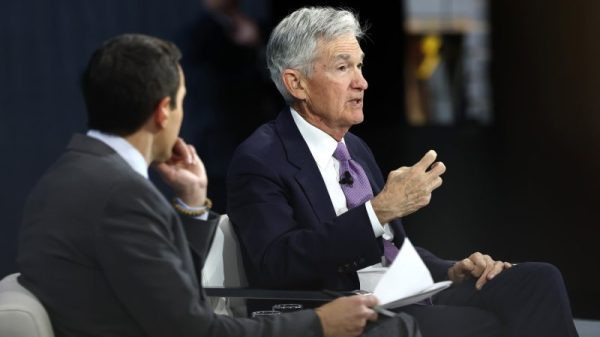Inflation has been a persistent concern for policymakers and individuals alike, as the cost of living continues to rise across various sectors of the economy. The Federal Reserve, tasked with maintaining stable prices and full employment, is facing a challenging environment as inflationary pressures persist. As data continues to point to a sustained uptick in prices, the Fed is finding itself in a delicate balancing act to address inflation without hindering economic growth.
One of the key indicators that the Fed closely monitors is the Consumer Price Index (CPI), which measures changes in the price level of a basket of goods and services typically purchased by households. In recent months, the CPI has shown a significant increase, driven mainly by sharp rises in energy and food prices. These spikes in prices have had a direct impact on consumers, who have seen their purchasing power eroded as the cost of everyday items continues to climb.
Another critical factor contributing to inflationary pressures is the supply chain disruptions resulting from the global pandemic and other external factors. These disruptions have led to shortages of key components and raw materials, causing prices to surge as demand outstrips supply. As a result, businesses are facing higher input costs, which, in turn, are being passed on to consumers in the form of higher prices.
The housing market is another area where inflation is clearly evident. As demand for housing remains strong, fueled by low mortgage rates and a growing population, home prices have surged to record highs. This trend is putting additional pressure on households, particularly first-time buyers, who are finding it increasingly challenging to afford a home in today’s market.
The labor market is also feeling the impact of inflation, as workers are demanding higher wages to keep up with rising living costs. Many businesses are struggling to attract and retain employees, leading to wage inflation as companies compete for talent in a tight labor market. This wage-price spiral can further exacerbate inflationary pressures, as higher labor costs are often passed on to consumers in the form of higher prices.
In response to these inflationary pressures, the Federal Reserve is carefully considering its monetary policy actions to ensure a delicate balance between supporting economic growth and keeping inflation in check. The Fed has signaled its willingness to gradually taper its asset purchases and eventually raise interest rates to prevent inflation from spiraling out of control. However, this delicate task requires careful judgment and precision to avoid derailing the fragile recovery.
In conclusion, the data so far is painting a concerning picture of persistent inflationary pressures that are making things tough on the Federal Reserve. As prices continue to rise across various sectors of the economy, the Fed faces a challenging environment in its efforts to maintain stable prices and full employment. By closely monitoring key indicators, such as the CPI, and taking appropriate policy actions, the Fed aims to strike a delicate balance that supports economic growth while keeping inflation at bay.





























